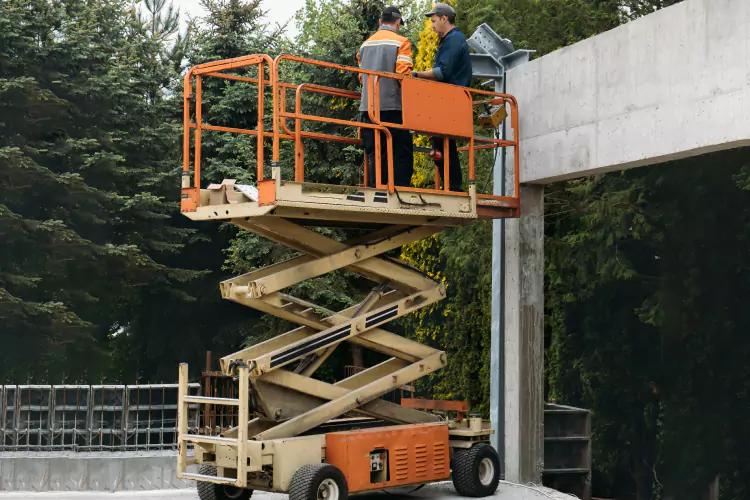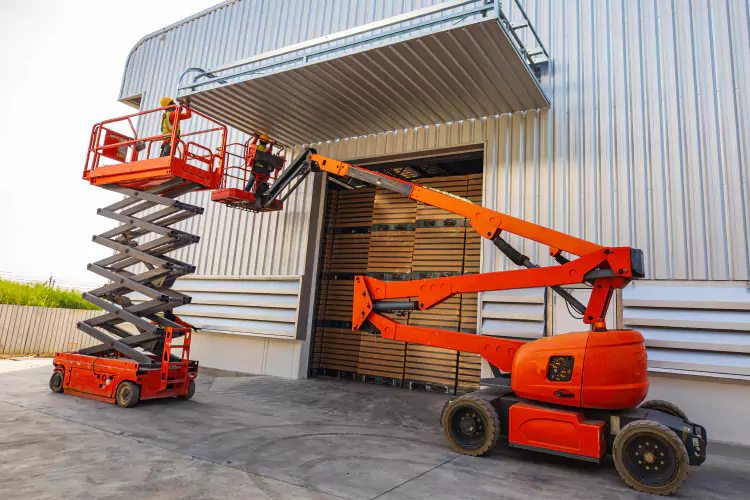Scissor lifts are indispensable tools in various industries, enabling workers to reach elevated areas with ease and efficiency. However, operating them without proper knowledge and precautions can lead to serious accidents. In this guide, we’ll explore essential safety practices and guidelines to ensure the safe operation of scissor lifts.
Understanding Scissor Lifts:
Before diving into safety procedures, it’s crucial to understand the basic components and operation of a scissor lift. These machines consist of a platform mounted on folding supports that extend vertically, powered by hydraulic, pneumatic, or mechanical means. Scissor lifts are used for tasks such as maintenance, construction, painting, and installation work, offering versatility and accessibility.Scissor lift is a type of aerial work platform, providing vertical mobility to access elevated locations. It utilizes a unique criss cross pattern, known as the ‘scissors mechanism,’ to achieve the necessary lift. When discussing the weight of a scissor lift, there is a broad range. Based on size, type, and load capacity, the weight can vary greatly. On the lighter side, a typical electric scissor lift can weigh between 2,680 pounds and 4,794 pounds. The larger diesel models, however, can tip the scale at up to 15,200 pounds. Remember, understanding the weight of your scissor lift is key to ensuring safe and stable operation.
Operating the Scissor Lift Safely:
Operating a scissor lift safely calls for stringent adherence to safety protocols. Begin by donning suitable personal protection equipment, which might include a safety harness if necessary. Ensure the area of operation is free from obstacles and overhead hazards that could potentially interfere with the lift. Pay close attention to the weight capacity of the lift, as exceeding this limit could lead to destabilization and potential accidents. Lastly, refrain from climbing the guardrails or employing ladders to access higher spots while operating the lift, as this can create an unsafe working condition.
Safety Precautions Before Operation:
Prior to operating a scissor lift, it’s essential to conduct thorough pre-operation checks to ensure optimal functionality and safety. Precautions taken before operation play a vital role in preventing mishaps and ensuring a safe working environment.
Here are some key steps to follow:
- Inspection: Inspect the scissor lift for any signs of damage, leaks, or worn-out parts. Pay close attention to hydraulic hoses, cables, and guardrails.
- Controls: Familiarize yourself with the controls and emergency stop mechanisms.
- Stability: Verify that the scissor lift is on stable ground, free from slopes, bumps, or obstacles.
- Weight Capacity: Always adhere to the manufacturer’s guidelines regarding weight limits and load capacities.

Safety Precautions When Operating a Scissor Lift
Once the pre-operation checks are complete, follow these safety protocols during operation:
- Secure Platform Entry: Use designated entry points and ensure all access gates are closed before elevating.
- Personal Protective Equipment (PPE): Wear appropriate PPE such as a hard hat, safety harness, and non-slip footwear.
- Smooth Movements: Operate the scissor lift’s controls smoothly and avoid abrupt maneuvers to prevent tipping.
- Positioning: Position the lift platform directly below the work area to minimize reaching or overextension.
- Avoid Overloading: Never exceed the scissor lift’s maximum weight capacity, including tools and equipment.
- Beware of Hazards: Stay vigilant for overhead obstacles, electrical hazards, and uneven surfaces.
- Weather Conditions: Avoid operating scissor lifts in adverse weather conditions such as strong winds, rain, or snow.
- Communication: Maintain clear communication with ground personnel and other workers in the vicinity.
- Emergency Procedures: Familiarize yourself with emergency descent procedures and be prepared to act swiftly in case of malfunction or danger.
Post-Operation Safety Measures:
A systematic post-use process is pivotal in prolonging equipment lifespan and in fostering a secure, hazard-free work environment.
After completing the task, follow these post-operation safety measures:
- Lowering the Platform: Lower the scissor lift platform to its lowest position before exiting.
- Equipment Storage: Properly store the scissor lift in a designated area, ensuring it’s secured and stable.
- Reporting: Report any equipment defects, malfunctions, or near misses to the appropriate personnel for inspection and repair.
- Maintenance: Regularly schedule maintenance checks and servicing to keep the scissor lift in optimal condition.
Training Requirements for Scissor Lift Operators
The Occupational Safety and Health Administration (OSHA) mandates that anyone tasked with operating a scissor lift must first undergo proper training. This educational process should encompass not only the basics of operating the lift but also risk identification, preventive measures, and emergency response procedures. If an operator is part of an accident, exhibits unsafe operation of the lift, or the work environment shifts in a way that could impact safety, additional training is necessary. This continuous education ensures operators remain updated on best practices and changes in safety regulations.
Importance of Adhering to OSHA Standards
Compliance with OSHA standards is critical when operating scissor lifts. These regulations provide essential directives to prevent accidents, such as falls and electrocutions, often associated with scissor lift operations. They also stipulate mandatory requirements for the design and construction of lifts to ensure they are safe for use. In addition to fostering safe operational practices, these standards encompass comprehensive training guidelines to ensure operators are well-equipped to handle the equipment safely. Non-compliance with OSHA standards not only endangers operators, but it can also result in substantial penalties for businesses. Thus, following these standards is crucial to maintaining a safe and compliant work environment.
Operating a scissor lift safely requires a combination of knowledge, vigilance, and adherence to safety protocols. By following the guidelines outlined in this comprehensive guide, workers can minimize the risk of accidents and injuries, ensuring a safe and productive work environment. Remember, safety should always be the top priority when operating scissor lifts or any other heavy machinery.
In general Renting a scissor lift from a reliable rental equipment company aligns seamlessly with standard operational procedures, offering a myriad of benefits. From ensuring compliance with industry regulations to promoting safety and efficiency, the decision to opt for a reputable rental provider like National Dispatching goes beyond mere convenience. This not only streamlines project logistics but also provides a reliable and standardized solution to meet the demands of various operations. By choosing National dispatching, businesses can navigate their projects with confidence, adhering to operational standards and achieving success in a dynamic and competitive landscape.

